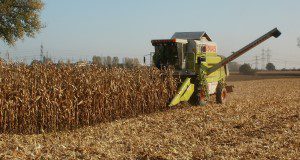Abstract
Good Agricultural Practices (GAPs) and Good Handling Practices (GHPs) encompass the general procedures that growers, packers, and processors of fresh fruits and vegetables should follow to ensure the safety of their product. GAPs usually deal with preharvest practices (i.e., in the field), while GHPs cover postharvest practices, including packing and shipping. This 5-page fact sheet covers harvest practices associated with sanitation in the field, including basic principles for microbial food safety and control of potential hazards. This major revision is a part of the Food Safety on the Farm series and was written by Jessica Lepper, Jaysankar De, Christopher Pabst, Renée Goodrich-Schneider, and Keith Schneider and published by the UF/IFAS Food Science and Human Nutrition Department.
http://edis.ifas.ufl.edu/fs160
References
Centers for Disease Control and Prevention (CDC). 2018. National Outbreak Reporting System (NORS). https://wwwn.cdc.gov/norsdashboard/
Code of Federal Regulations. 2016a. Current Good Manufacturing Practice, Hazard Analysis, and Risk-Based Preventive Controls for Human Food: Plant and Grounds. https://www.accessdata.fda.gov/scripts/cdrh/cfdocs/cfcfr/CFRSearch.cfm?fr=117.20
Code of Federal Regulations. 2016b. Current Good Manufacturing Practice, Hazard Analysis, and Risk-Based Preventive Controls for Human Food: Sanitary Facilities and Controls. https://www.accessdata.fda.gov/scripts/cdrh/cfdocs/cfcfr/CFRSearch.cfm?fr=117.37
Code of Federal Regulations. 2016c. Current Good Manufacturing Practice, Hazard Analysis, and Risk-Based Preventive Controls for Human Food: Equipment and Utensils. https://www.accessdata.fda.gov/scripts/cdrh/cfdocs/cfcfr/CFRSearch.cfm?fr=117.40
Florida Administrative Code. 2007. Rule 5G-6. Tomato inspection. https://www.flrules.org/gateway/ChapterHome.asp?Chapter=5G-6
Florida Department of Agriculture and Consumer Services. 2014. Rule 5G-6. Tomato Best Practices Manual. https://www.flrules.org/Gateway/reference.asp?No=Ref-05931
Food and Drug Administration (FDA). 1998. Guide to Minimize Microbial Food Safety Hazards for Fresh Fruits and Vegetables. https://www.fda.gov/regulatory-information/search-fda-guidance-documents/guidance-industry-guide-minimize-microbial-food-safety-hazards-fresh-fruits-and-vegetables
Food and Drug Administration (FDA). 2008. Guidance for Industry: Guide to Minimize Microbial Food Safety Hazards of Fresh-cut Fruits and Vegetables. https://www.fda.gov/Food/GuidanceRegulation/GuidanceDocumentsRegulatoryInformation/ProducePlantProducts/ucm064458.htm
Food and Drug Administration (FDA). 2015. Standards for Produce Safety Coverage and Exemptions/Exclusions for 21 Part 112. https://www.fda.gov/downloads/Food/GuidanceRegulation/FSMA/UCM472499.pdf
Food and Drug Administration (FDA). 2018a. Produce Safety Standards. https://www.fda.gov/food/guidanceregulation/fsma/ucm304045.htm
Food and Drug Administration (FDA). 2018b. Food Safety Modernization Act. http://www.fda.gov/Food/GuidanceRegulation/FSMA/default.htm
Food and Drug Administration (FDA). 2018c. FSMA Final Rule for Preventive Controls for Human Food. https://www.fda.gov/food/guidanceregulation/fsma/ucm334115.htm
Food and Drug Administration (FDA). 2018d. Compliance Dates. https://www.fda.gov/Food/GuidanceRegulation/FSMA/ucm540944.htm
Food and Drug Administration (FDA). 2019. FSMA Final Rule on Produce Safety. http://www.fda.gov/Food/GuidanceRegulation/FSMA/ucm334114.htm.
Unless otherwise specified, articles published in the EDIS journal after January 1, 2024 are licensed under a Creative Commons Attribution-NonCommercial-NoDerivs 4.0 International (CC BY-NC-ND 4.0) license.


